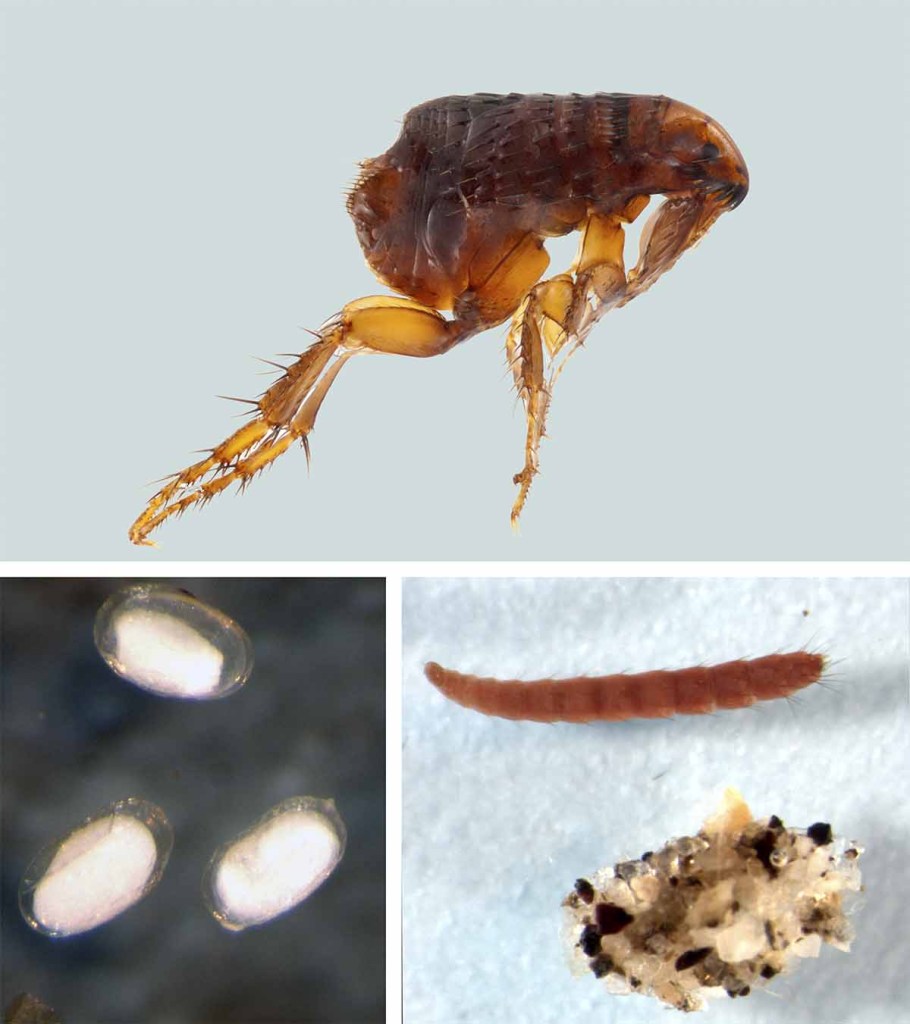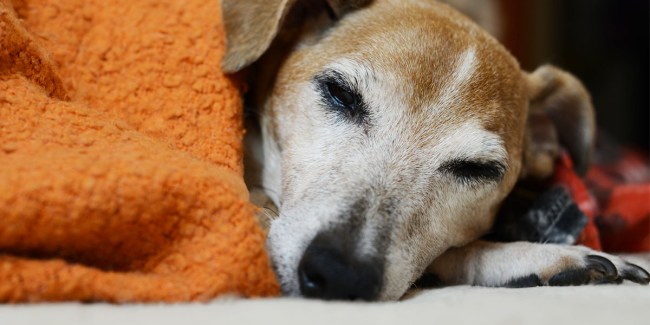
Breaking the flea life cycle1,2
Keep your pet and your home flea-free by treating your pets and targeting places where fleas like to hide
If you’ve had a flea infestation in your home, you’ll never want to have one again. To stop repeat infestations, you need to break the flea life cycle once and for all, for a successful attempt at getting rid of fleas.
It’s a sobering thought that, for every flea on your dog or cat, there are probably at least nine more in your home. Adult fleas lay eggs that hatch into larvae and get everywhere — in carpets, between floorboards, in upholstery, and in your pet’s bedding.
So you might think you’ve accomplished getting rid of fleas, only to find a new generation emerging days to weeks after you’ve started treating your pet. This can be triggered by a change in temperature, for instance when you turn the central heating up.
To avoid such a nasty surprise, veterinary professional organizations recommend using an oral or spot-on flea product year-round, such as BRAVECTO® (fluralaner) to break the flea life cycle. This can kill adult fleas, kill immature fleas in your pet’s immediate surroundings, and/or make sure that any newly hatched adult fleas that jump onto your pet won’t last long. There are a number of such products available, and choosing the correct one for you and your pet is a decision that is best made through a discussion with your veterinarian.
Checklist – target flea hideouts!
- Help your pet break the flea life cycle with a flea treatment.
- Clean the house thoroughly on the same day.
- Wash all your pet’s bedding at a high temperature.
- Vacuum your carpets and furniture to remove eggs, larvae and pupae, and discard the vacuum cleaner bag.
By targeting all the hideouts at once, you help break the life cycle and keep your pet and home flea-free.
REFERENCES:
1. Blagburn BL, Dryden MW. Biology, treatment, and control of flea and tick infestations. Vet Clin N Am Small Anim. 2009;39(6):1173-1200.
2. Dryden M, Rust M. The cat flea: biology, ecology and control. Vet Parasitol. 1994;52(1-2):1-19.
IMPORTANT SAFETY INFORMATION
BRAVECTO 1-MONTH (fluralaner) Chews: indicated for dogs 8 weeks of age and older. The most commonly reported adverse reactions include itching, diarrhea, vomiting, decreased appetite, elevated ALT, lethargy, and weight loss. BRAVECTO 1-MONTH (fluralaner) Chews is not effective against A. americanum in puppies less than 6 months of age. BRAVECTO (fluralaner) Chews: The most commonly reported adverse reactions include vomiting, lethargy, diarrhea, anorexia and pruritus. In some cases, adverse events have been reported following use in breeding females. BRAVECTO (fluralaner topical solution) for Dogs: The most commonly reported adverse reactions include vomiting, hair loss, diarrhea, lethargy, decreased appetite, and moist dermatitis/rash. BRAVECTO (fluralaner topical solution) for Cats: The most commonly reported adverse reactions include vomiting, itching, diarrhea, hair loss, decreased appetite, lethargy, and scabs/ulcerated lesions. BRAVECTO (fluralaner topical solution) for Cats is not effective against American dog ticks beyond 8 weeks of dosing. BRAVECTO PLUS (fluralaner and moxidectin topical solution) for Cats: The most commonly reported adverse reactions include vomiting, hair loss, itching, diarrhea, lethargy, dry skin, elevated ALT, and hypersalivation. BRAVECTO PLUS (fluralaner and moxidectin topical solution) has not been shown to be effective for 2 months in kittens less than 6 months of age. Use with caution in cats that are heartworm positive. The effectiveness of BRAVECTO PLUS (fluralaner and moxidectin topical solution) to prevent heartworm disease after bathing or water immersion has not been evaluated.
BRAVECTO (fluralaner) has not been shown to be effective for 12-weeks’ duration in puppies or kittens less than 6 months of age. BRAVECTO (fluralaner) Chews and Topical Solution for dogs is not effective against the lone star tick beyond 8 weeks of dosing. BRAVECTO (fluralaner topical solution) for Dogs and Cats and BRAVECTO PLUS (fluralaner and moxidectin topical solution) for cats are for topical use only. Avoid oral ingestion. The safety of BRAVECTO (fluralaner topical solution) for Cats and BRAVECTO PLUS (fluralaner and moxidectin topical solution) has not been established in breeding, pregnant, and lactating cats.
All BRAVECTO (fluralaner) products contain fluralaner, which is a member of the isoxazoline class. This class has been associated with neurologic adverse reactions including tremors, ataxia, and seizures. Seizures have been reported in dogs receiving isoxazoline class drugs, even in dogs without a history of seizures. Use with caution in dogs with a history of seizures or neurologic disorders. Neurologic adverse reactions have been reported in cats receiving isoxazoline class drugs, even in cats without a history of neurologic disorders. Use with caution in cats with a history of neurologic disorders.
More like this
- Caring for a senior pet
 Caring for a senior pet Cats and dogs may need … Read more
Caring for a senior pet Cats and dogs may need … Read more - Dealing with your pet’s allergies
 Dealing with your pet’s allergies Just like humans, pets can … Read more
Dealing with your pet’s allergies Just like humans, pets can … Read more - Five things you may not know about leptospriosis
 Five things you may not know about leptospirosis Leptospirosis is … Read more
Five things you may not know about leptospirosis Leptospirosis is … Read more





